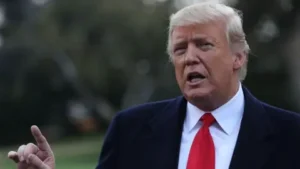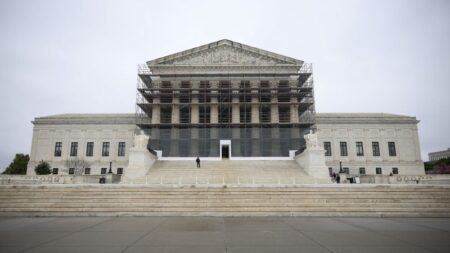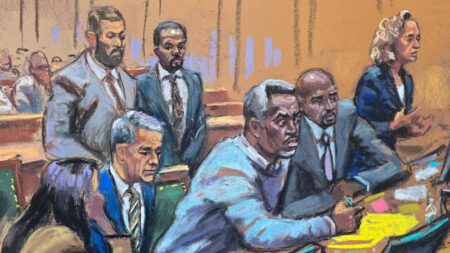The recent ruling from the U.S. Supreme Court has significantly expanded the executive power historically wielded by presidents, particularly Donald Trump. The ruling allows for the implementation of Trump’s controversial executive order aimed at ending the constitutional provision of birthright citizenship. This landmark decision, many interpret, may set new precedents that not only affect immigration policy but also broadly influence the scope of presidential authority moving forward.
Trump showcased his delight over the ruling during a press briefing at the White House, calling it a “big, amazing decision” and deemed it a “monumental victory for the constitution, the separation of powers, and the rule of law.” His remarks highlight the administration’s ongoing emphasis on a stricter interpretation of immigration controls, encapsulating his agenda that has been a signature issue since his presidential campaign. The Supreme Court’s ruling is perceived as a clarion call that not only benefits Trump’s current policies but will also facilitate future presidents in executing their agendas with less hindrance from lower courts, something that has been a persistent source of contention among lawmakers.
The immediate implications of the ruling center around the topic of birthright citizenship. Traditionally, anyone born on U.S. soil is granted citizenship under the 14th Amendment. However, following the court’s decision, the Trump administration gains the substantial power to alter this long-standing practice. Conditions now seem to favor Trump’s executive order while legal disputes loom over its practical implementation. The administration will need to navigate through a labyrinth of legal challenges, particularly since states control the procedure for issuing birth certificates and recording citizenship status, a factor that could complicate any federal attempts to revoke birthright citizenship without cooperation from state governments.
This ruling, however, does not immunize the federal government from potential legal battles. The justices, led by Justice Amy Coney Barrett, left room for state challenges against the executive action. The states argue that they might suffer irreparable harm, especially in terms of financial liabilities and administrative burdens related to social benefits programs for citizens. The court has mandated that lower courts examine these claims and make decisions on whether broader injunctions against the executive order are necessary, indicating that while the door has opened for Trump’s policies, substantial hurdles remain.
As Trump heralds this ruling as a victory over what he refers to as the “birthright citizenship hoax,” Attorney General Pam Bondi has emphasized that the matter will likely be fully addressed in October during the Court’s next session. This move creates a sense of urgency within the administration, reflecting their intent to solidify their immigration policy framework swiftly before legal challenges further complicate the process.
The broader implications of the decision on presidential authority are substantial. The court’s ruling curbs the ability of lower federal judges to issue nationwide injunctions that have often halted executive orders and legislative actions. Past administrations, both Democratic and Republican, have expressed frustration with federal judges who block policy initiatives. The new ruling could pave the way for smoother enactment of executive actions, allowing the current and future administrations to pursue their agendas with greater confidence against judicial interference.
However, while the Court has facilitated a more favorable landscape for presidential authority, it also underscores that checks and balances remain. The judiciary will still intervene if presidential actions are deemed unconstitutional or illegal. Nonetheless, the balance of power is shifting, potentially simplifying the implementation of an executive agenda while reigniting debates about the role of federal courts in delineating the boundaries of presidential powers.
In conclusion, the Supreme Court ruling marks a pivotal moment not only for Trump’s administration but also in the broader context of American governance. It hints at a future where executive powers might expand significantly, yet it also sets the stage for an intensified legal battleground over the authority and limitations of these powers. As implications unfold, the ongoing tug-of-war between state ambitions and federal mandates promises a complex legal landscape for years to come.











